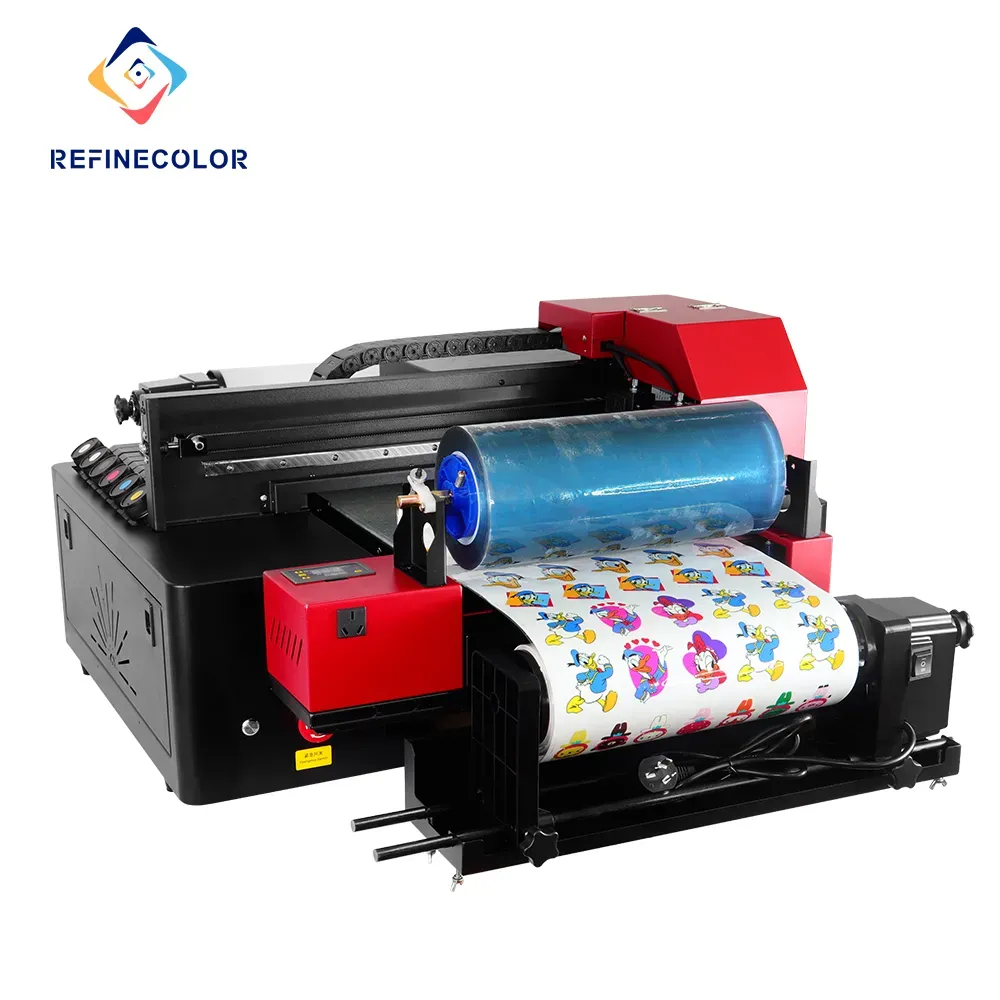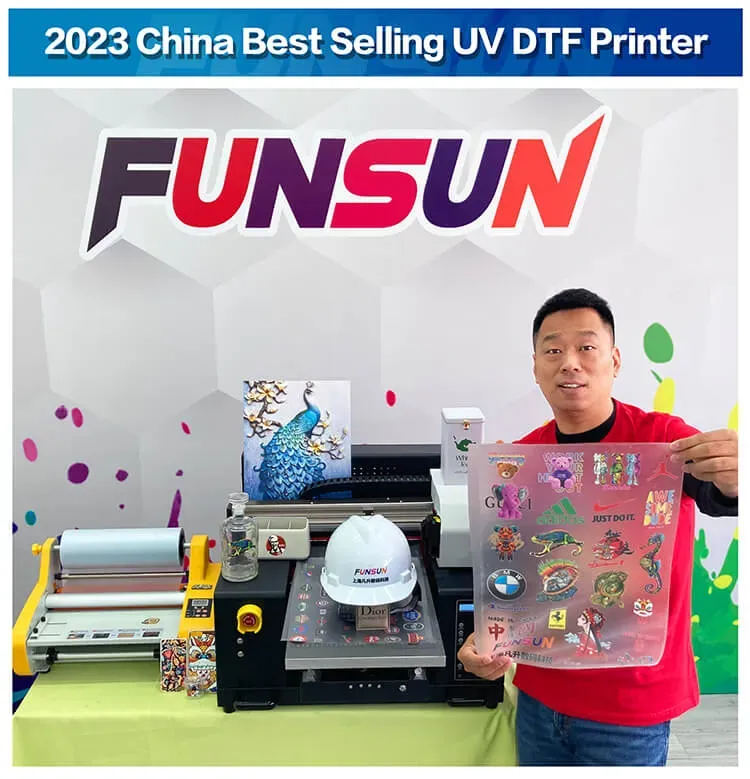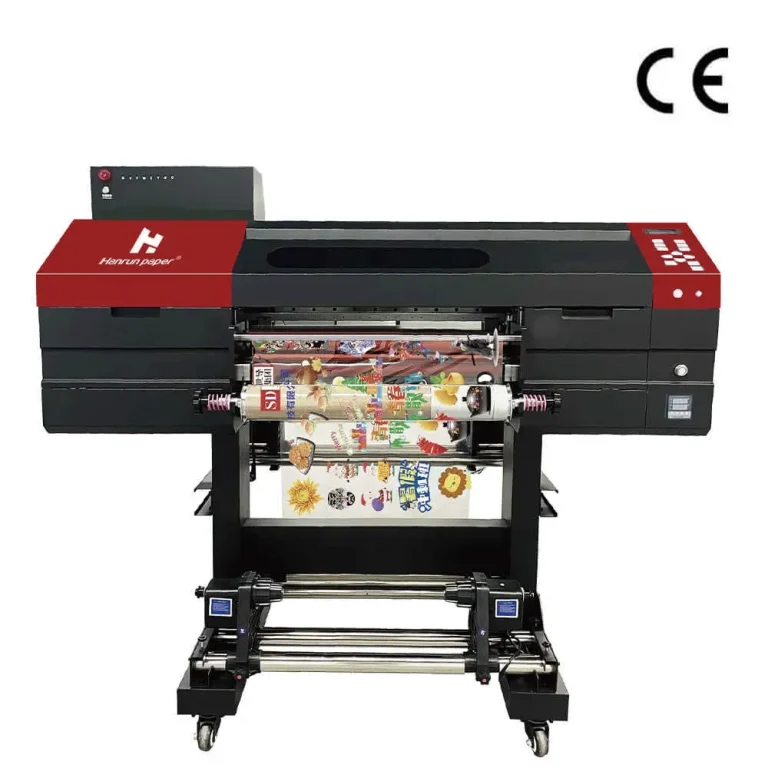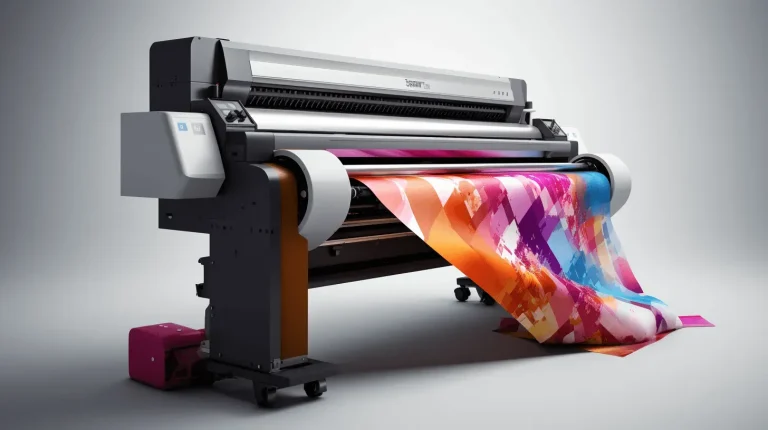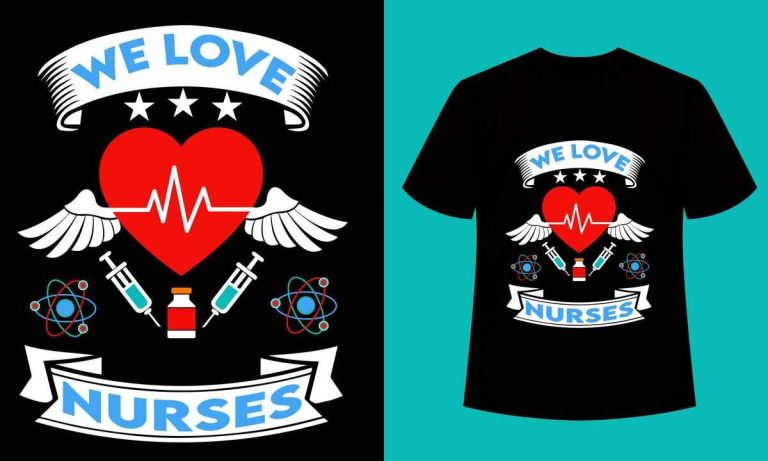In the vibrant and ever-evolving world of printing technology, **UV Direct-to-Film (DTF)** printing is making significant strides towards revolutionizing the industry. This innovative method stands out for its ability to produce high-quality printing results with stunning color accuracy and rich detail, making it a preferred choice among businesses. Utilizing ultraviolet light to cure inks onto film substrates, UV DTF offers a user-friendly experience that promotes eco-friendly printing practices while reducing environmental impact. As industries increasingly demand versatile printing solutions, UV DTF technology is setting the stage for a new era, showcasing advances that ensure durability and customization. In this article, we’ll explore how UV DTF is reshaping the landscape of high-quality printing, from its sustainability to its competitive advantages over traditional methods.
Delving into the realm of modern printing techniques, **UV DTF** represents a groundbreaking approach that integrates the principles of direct-to-film technology with precision UV printing. This advanced technique allows for exceptional print outcomes that cater to diverse applications, whether in fashion, signage, or promotional products. By leveraging ultraviolet-curable inks, this method not only enhances printing quality but also minimizes environmental impact, aligning with the global shift towards eco-friendly printing solutions. As businesses seek out innovative printing technologies, the allure of UV DTF becomes increasingly evident—offering quick turnaround times and remarkable durability that traditional methods struggle to match. Thus, the emergence of UV DTF is not just a trend, but a significant leap forward in achieving high-quality and sustainable printing results.
Exploring the Mechanics of UV DTF Printing
At the core of UV Direct-to-Film (DTF) printing lies a sophisticated blend of technology and chemistry. This innovative printing method employs ultraviolet-curable inks that are instantly dried and set using UV light, offering a rapid and efficient production process. The ability to print on a variety of surfaces, from textiles to rigid materials, requires specialized printers designed to handle the nuances of each substrate. This adaptability makes UV DTF printing a valuable tool for businesses aiming to create high-quality prints that stand out in a crowded marketplace.
Furthermore, the mechanics of UV DTF printing ensure vibrant and detailed outputs that are resistant to wear and tear. The curing process enhances the adhesion of the ink to the film substrate, resulting in prints that can withstand environmental challenges, including UV exposure and moisture. As industries demand increasingly customized solutions, understanding the mechanics of UV DTF printing can empower businesses to leverage this technology for enhanced branding and customer engagement.
Recent Advancements in UV DTF Technology
The field of UV DTF printing technology is rapidly evolving, with recent advancements driving significant improvements in both speed and quality. Manufacturers are investing in research and development to create advanced ink formulations that have broader color ranges and improved durability, catering to the ever-increasing demands of the market. For instance, the introduction of multi-layer printing capabilities allows for more intricate designs and textures, which is especially beneficial for fashion and promotional merchandise.
Moreover, enhanced printing speeds reduce turnaround times, making UV DTF printers a game-changing asset for businesses facing tight schedules. This technological advancement not only serves current market needs but also prepares printers for future demands. As e-commerce continues to rise alongside personalized products, the ability to quickly produce high-quality prints enables companies to remain competitive and responsive to customer preferences.
Sustainability in UV DTF Printing
In today’s environmentally-conscious market, UV DTF printing technology is gaining traction due to its eco-friendly characteristics. Unlike traditional printing methods that may release harmful volatile organic compounds (VOCs), UV DTF employs a curing process that minimizes these emissions, aligning with sustainable business practices. This reduction of VOCs is not just beneficial for the health of the environment but also appeals to consumers who prefer brands that prioritize ecological responsibility.
Additionally, the longevity and durability of UV DTF prints contribute to sustainability efforts by reducing waste. High-quality prints that withstand fading and damage result in fewer replacements, making this technology a smart choice for businesses looking to lessen their environmental impact. By integrating UV DTF printing into their operations, companies can effectively champion sustainability while still delivering exceptional products that meet consumer demands.
User-Friendly Features of UV DTF Printers
One of the standout features of modern UV DTF printers is their user-friendliness. With intuitive touchscreen interfaces and advanced software, these machines make it easy for users of all experience levels to navigate the printing process. This accessibility is crucial for small businesses or newcomers who may feel intimidated by complex printing technologies. The streamlined operation of UV DTF printers allows even those without extensive technical backgrounds to create stunning prints with relative ease.
Moreover, instructional guides and customer support resources provided by manufacturers further enhance the usability of UV DTF systems. As these printers become more accessible, the potential for widespread adoption among small to medium-sized enterprises increases, leading to greater innovation and competition in the printing industry. Overall, these user-centric features ensure that businesses can harness the capabilities of UV DTF technology to produce high-quality results efficiently.
Comparative Benefits of UV DTF vs. Traditional DTF Printing
When analyzing printing technologies, it becomes evident that UV DTF offers significant benefits over traditional DTF printing methods. One major advantage is its capability to print on a wider array of materials, which is essential for businesses targeting diverse applications, from promotional goods to custom apparel. This versatility allows companies to expand their service offerings and tap into new markets, ensuring they stand apart from competitors who may be limited by conventional methods.
Additionally, the immediate curing process of UV DTF printing translates to quicker production times, which greatly benefits businesses with demanding deadlines. This efficiency not only enhances workflow but also attracts clients seeking fast turnaround solutions. The robust quality and durability of UV DTF prints ensure that products remain intact over time, allowing businesses to maintain a positive reputation and customer satisfaction.
The Future Outlook for UV DTF Printing
As industries continue to seek high-quality and sustainable printing solutions, the future of UV DTF technology appears promising. With its ability to produce vibrant, detailed prints with durability, and its eco-conscious attributes, UV DTF is poised to become a leading choice among printing technologies. Companies that invest in this innovative method will likely capitalize on the growing demand for customized and high-quality printed goods in various sectors.
Moreover, as technology advances, we can expect further enhancements in UV DTF printing capabilities. Innovations such as automated processes and improved ink formulations will likely emerge, enabling even greater efficiency and print quality. As businesses adapt to the shifting landscape of consumer preferences, embracing advancements in UV DTF printing will be key to maintaining competitiveness and driving growth in the printing market.
Frequently Asked Questions
What is UV DTF printing technology and how does it work?
UV Direct-to-Film (DTF) printing technology is an advanced printing method that uses ultraviolet light to cure ink directly onto film substrates. This process involves applying UV-curable inks, which then immediately dry upon exposure to UV light, resulting in high-quality printing with vibrant colors and intricate designs.
What are the benefits of using UV DTF for high-quality printing?
The benefits of UV DTF for high-quality printing include exceptional color accuracy, durability, and versatility. This technology allows for printing on a wide range of materials, making it suitable for textiles, promotional items, and more, while delivering prints that resist fading and wear.
Is UV DTF printing an eco-friendly option compared to traditional printing methods?
Yes, UV DTF printing is considered an eco-friendly option as it utilizes UV-curable inks that greatly reduce volatile organic compounds (VOCs). This environmentally conscious approach appeals to businesses aiming for sustainable printing practices while minimizing their ecological footprint.
How does UV DTF technology compare to traditional DTF printing?
UV DTF technology outperforms traditional DTF printing methods by offering immediate curing, which leads to faster production times. Moreover, UV DTF can print on a wider variety of materials and delivers enhanced durability, ensuring long-lasting quality in printed materials.
What recent advancements have been made in UV DTF printing technology?
Recent advancements in UV DTF printing technology include improved ink formulations for a broader color spectrum and enhanced print durability, as well as increased printing speeds that allow businesses to meet urgent printing demands without compromising on quality.
What makes modern UV DTF printers user-friendly and accessible?
Modern UV DTF printers are designed with user-friendliness in mind, featuring intuitive touchscreen controls and advanced software systems. These enhancements make the printing process more accessible for businesses and individuals, allowing even those with limited technical expertise to produce high-quality printed materials.
| Key Point | Description |
|---|---|
| Introduction to UV DTF | UV Direct-to-Film printing is a high-quality, versatile printing technology utilizing UV light to cure inks onto films, allowing for precise color and detail. |
| Understanding UV DTF Printing | UV DTF involves applying UV-curable inks which dry quickly, making it suitable for various applications like textiles and signage. |
| Recent Developments | Significant advancements in ink formulations and printing speed cater to more complex designs for sectors like fashion and e-commerce. |
| Market Growth | There is a rising demand for high-quality prints, pushing suppliers to invest in UV DTF printing technologies. |
| The Sustainability Factor | Many UV DTF inks reduce VOC emissions, establishing UV DTF as an eco-friendly choice in printing. |
| User-Friendly Features | Modern UV DTF printers offer intuitive controls, making them accessible to small businesses and newcomers. |
| Comparative Advantages | UV DTF can print on more materials, offers quicker curing, and has enhanced durability compared to traditional DTF methods. |
Summary
UV Direct-to-Film printing technology represents a revolutionary advancement in the printing industry, characterized by its innovative use of UV light for curing inks. Emphasizing quality and versatility, UV DTF not only enhances printing capabilities but also caters to the burgeoning market demand for customized products. The advancements in this technology, from eco-friendly inks that reduce environmental impact to user-friendly features accessible to all skill levels, further solidify UV DTF’s position as a preferred choice. As businesses adapt to modern printing needs, UV DTF stands out as a key player in fostering sustainability and improving product longevity in an ever-evolving marketplace.

